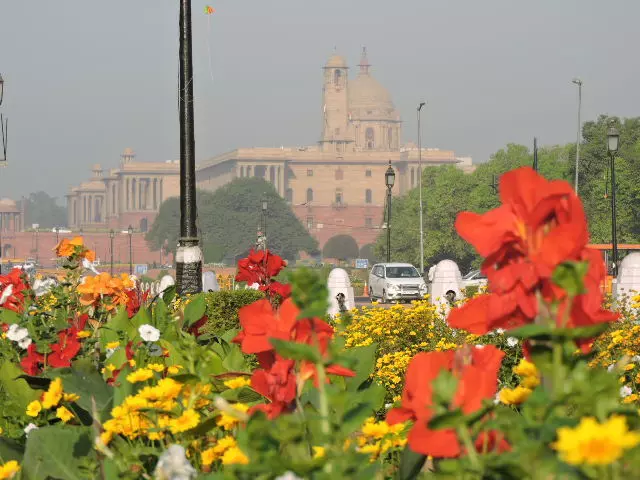
Spring season is gradually disappearing in India, warns study
As temperatures get warmer in winter months of January and February, states in India seem to be transitioning quickly from winter to summer-like conditions entirely skipping spring, says study

Spring is the season, when the natural world revives, new seedlings sprout and hibernating animals awake. It has forever been a season of joy, celebration and colour.
However, a disturbing new study by US-based Climate Central, an organisation of climate scientists and researchers, shows that spring is gradually "disappearing" in India.
As temperatures get warmer, states in India seem to be transitioning quickly from winter to summer-like conditions entirely skipping spring. The study titled ‘Winter Temperature Trends Across India', reveal that many parts of northern India are experiencing an abrupt transition from winter to summer-like conditions, as February warming rates have increased sharplyin recent decades. The faster warming rates in February make spring feel shorter, pointed out the study.
Global warming
Dr Andrew Pershing, VP for Science at Climate Central, said about the study, “The cooling in the central and northern Indian states during January followed by very strong warming in February creates the potential for a quick jump from winter to spring-like conditions.” He attributed it largely to humans burning coal and oil, which has warmed the planet leading to warmer conditions in all seasons across India.
The study analysed the monthly average temperature for 33 states and Union territories from 1970 to 2023. This is the period when most global warming has occurred and for which consistent data exists, said the report.
Rise in net warming
According to the report, every region they studied had 'net warming' during winter months of December through to February, with the southern states throwing up the largest increases in December and January. They found that winter is the fastest warming season for 12 out of the 34 states and territories.
The northern part of the country however had weaker warming and even cooling during December and January.
A significant finding is that Manipur has the highest overall change in net warming since 1970 with 2.3 degrees Celsius, while Delhi, known for its polluted air quality, had the smallest change with 0.2 degrees celsius. Besides Delhi, Ladakh and Uttar Pradesh had the lowest warming rates.
Warming in February
While December and January temperatures cooled slightly or saw minimal warming across northern India, all regions experienced significant warming in February. Nine states including Rajasthan, Haryana, Delhi and Uttar Pradesh, saw a significant difference of over 2 degrees Celsius between their January and February warming rates.
Among the northern states, Rajasthan experienced the largest "jump" in warming, with February temperatures shooting up at a rate 2.6 degrees Celsius higher than January since 1970.
Jump from slight warming to strong warming
The contrast between January trends (cooling or slight warming) and February (strong warming) means that these regions now have the potential for abrupt transitions from cool winter-like temperatures to the much warmer conditions that traditionally occurred in March, pointed out the report's findings.
These outcomes support widespread reports from India that spring feels like it has disappeared, as temperatures shift from winter to summer conditions. What this disappearing season will mean to farmers and to nature is the subject of another study.
The primary cause of this warming, added the study, is rising levels of carbon dioxide in the atmosphere from burning coal, oil, and natural gas.

